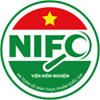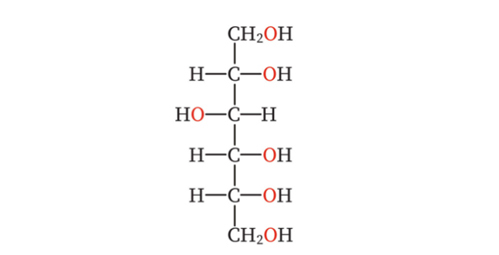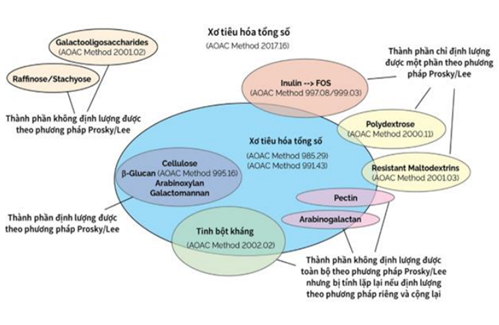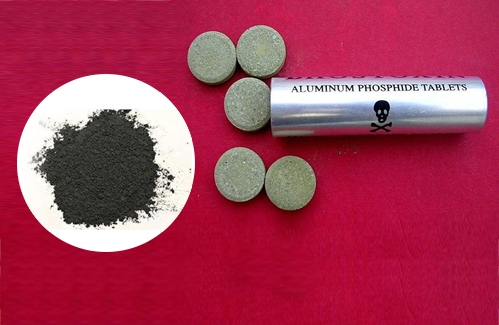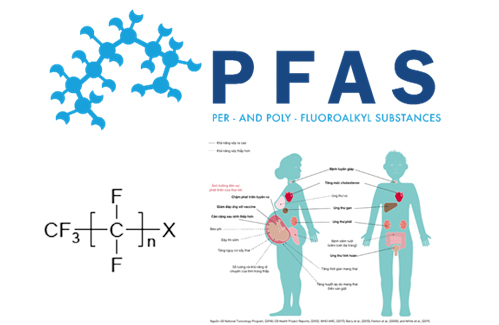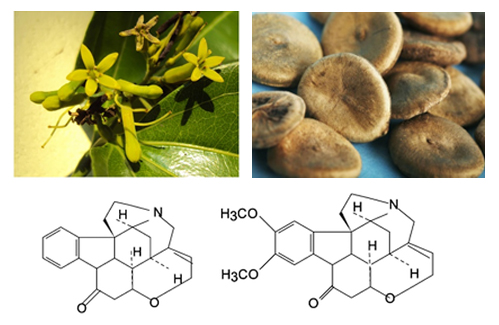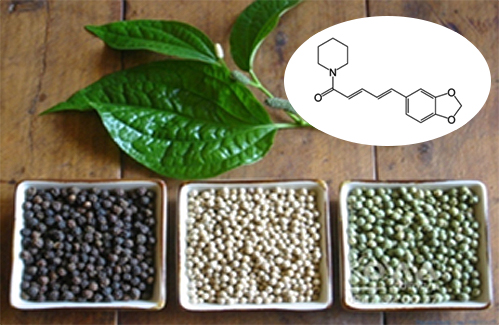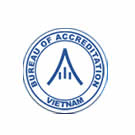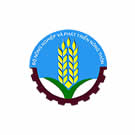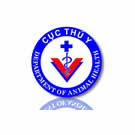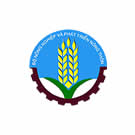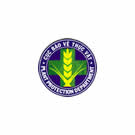- Folder Technical News
- Views 2882
- Last Updated 17/07/2024
Polychlorinated Biphenyls (PCBs) are toxic and difficult to decompose, causing harm to human health and the environment as stipulated in the Stockholm Convention. Vietnam is the 14th member participating in the Stockholm Convention to commit to completely stop using PCBs in 2020 and safely destroy them by 2028.
1. What are PCBs ?
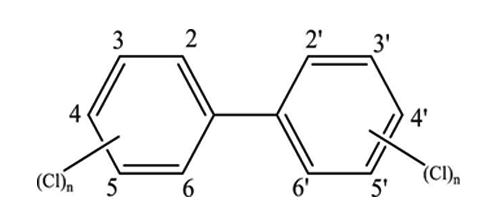
Figure 1: Chemical structure of PCBs
(n represents the number of chlorine atoms per ring)
PCBs have 10 homologues and 209 compounds, of which 130 are commercially produced. PCBs have a high flash point; these compounds are fire resistant (170–380°C). Due to their non-flammable properties, good electrical insulation, and high boiling point, PCBs have been produced and widely used since 1929. They are often used as additives in many industries s including transformer insulating oil, voltage and capacitors, hydraulic oil, plasticizers in paint, printing ink, carbon-free paper, artificial rubber, and flame retardants.
PCBs are produced in many countries, and these compounds have appeared on the market under many different brands and trade names like Arochlor, Chlophen, Kanechlor and Fenchlor.
2. Impacts of PCBs on Human Health
PCBs have been banned from production and use in most countries since the late 1970s, however about 10% of PCBs produced since 1929 still exist in the environment today. PCBs are very stable, have the ability to evaporate, are poorly soluble in water but are well soluble in fats. Thus, they can accumulate in animal fatty tissue, enter the food chain and persist for a long time in the environment. At high temperatures, PCBs can be metabolized and produce toxic byproducts, such as dioxins and dioxin analogues [2]. Some risks of PCBs effects on human health are as follows:
2.1 Risk of getting cancer
PCBs are one of the most widely studied environmental contaminants. Many studies on animals and humans have been performed to evaluate the carcinogenicity of PCBs. In 2013, the International Agency for Research on Cancer (IARC) classified dioxin-like PCBs as group 2A human carcinogens.
Epidemiological studies in human populations thought to be exposed to PCBs have been conducted. Based on reports of the Agency for Toxic Substances and Disease Registry (ATSDR, 2000), there is an increased risk of death from cancers of the gastrointestinal tract, liver, hematopoietic system, and malignant tumors. The types of PCBs that tend to bioaccumulate in fish, other animals and in sediments are the most carcinogenic mixtures.
2.2 Disorders of nervous system and other functions
Multiple epidemiological assessments have shown that exposure to PCBs during nervous system development increases the risk of neurological impairment in children, through impairment of cognitive and neuromotor function and movement, as well as a decline in concentration, learning and memory. Furthermore, recent studies suggest that prenatal exposure to PCBs may increase the risk of autism spectrum disorder and attention deficit hyperactivity disorder. Experimental studies in animals confirm that exposure to PCBs causes neurobehavioral effects similar to those observed in humans [3].
The results of various epidemiological studies indicate that exposure to PCBs is also associated with immune system dysfunction, thymic atrophy, suppression of immune responses, and cardiovascular diseases, such as such as stroke and high blood pressure. In addition, adults exposed to high levels of PCBs reduce the amount of thyroid hormone triiodothyronine, which affects almost every physiological process in the body, including growth and development, metabolism. , body temperature and heart rate. It also leads to decreased immunity and increased thyroid disorders.
In addition, several studies have shown that PCBs other than dioxine alter cellular calcium homeostasis, increasing intracellular Ca2+ ion concentrations and/or activating various cellular processes mediated by time of the same Ca2+ ion.
2.3 Hormonal disorders and effects on reproductive organs
PCBs disrupt hormones causing diseases such as diabetes, cardiovascular disease, hypertension, thyroid and reproductive organs (the main target of most endocrine disruptors). Some studies have shown that PCBs can interfere with endocrine processes and that long-term exposure to them can reduce the fertility and reproductive quality of animals and humans. In fact, the toxicity of PCBs has been demonstrated in both animal and human studies.
PCBs have been found in ovarian follicles, amniotic fluid, uterus, ovarian tissue, placenta, fetal umbilical cord blood, and breast milk. PCBs accumulate over time in human follicular fluid and serum. Women's exposure to PCBs can damage ovarian function, leading to reproductive problems, such as abnormal hormone levels, premature ovarian failure and ultimately infertility. Other side effects in women, related to PCBs exposure, are earlier menopause, altered menstrual function, and increased risk of miscarriage.
Male exposure to endocrine disruptors, such as PCBs, and their subsequent bioaccumulation, has been associated with reduced semen quality and fertility. In particular, exposure to PCBs in the environment affects reproductive hormone levels, sperm concentration, motility, morphology, and quantity, and it changes the redox state of plasma. seminal fluid and other sperm elements.
In fact, PCBs can be transmitted from mother to fetus across the placenta, leading to transgenerational effects, such as genetic mutations in sperm and brain. Prenatal exposure to PCBs affects gestational length and birth weight and reduces IQ and fertility in offspring [3].
3. Exposure routes of PCBs
PCBs have been produced and widely used in industry since 1930 as an additive to insulators in electrical equipment such as transformers, capacitors, and in hydraulic fluids for electrical lifting equipments. Although there are many outstanding advantages such as good electrical insulation and no explosion, PCBs are difficult to decompose and last a long time in the environment. PCBs are substances that cause great harm to human health such as causing cancer and negatively affecting the nervous, immune, and reproductive systems. Therefore, PCBs have been banned from producing and using since 1979. Up to now, the use of PCBs are no longer there, but due to improper handling of products containing PCBs, they still exist in the environment (water, soil, air). Vietnam is a country that does not produce PCBs, but they exist in machinery, transformer oil, and capacitors imported from abroad. During the period 1960 - 1990, it was estimated that about 27,000 to 30,000 tons of oil containing PCBs in electrical equipment were imported from the US, Russia, China and some other countries into Vietnam.
Besides, PCBs are often formed during the production of organic pigments containing chlorinated intermediates and solvents. The concentration and properties of PCBs vary widely between pigments and manufacturers, with total PCBs levels ranging from below the detection limit to several hundred ppm; The main ingredients may be low-chlorine substances (e.g. PCB-11) or high-chlorine analogues (e.g. PCB-209). Pigment-derived PCBs can be released into the environment through various steps including pigment production, application, and disposal. They can contaminate atmospheric, terrestrial and aquatic ecosystems, subsequently affecting the organisms that live there.
PCBs can spread in the living environment by:
• Improper storage and disposal of illegal PCBs waste;
• Hazardous waste dumps containing PCBs, industrial waste incinerators operating improperly;
• Oil spills and leaks containing PCBs from electrical equipment such as transformers, capacitors or industrial equipment such as hydraulic lifting machines;
• Dispose of old products containing PCBs such as electronic devices, plastic utensils, paint, etc. in residential areas or regular landfills;
• Burning waste containing PCBs in residential areas;
• PCBs from organic paints and pigments.
Due to their difficult to decompose properties, PCBs have the ability to spread far and wide when released into the environment. PCBs have been found in soil, water, and sediment, with a small portion evaporating into the air. PCBs can accumulate in plants through uptake of nutrients from the soil. Over time in the environment, PCBs can accumulate in the food chain. Due to their lipophilic properties, PCBs are often found in fatty tissue of aquatic and terrestrial animals. Food is the main source of exposure to PCBs in humans. PCBs are found in the liver, tissue, brain, skin and blood in humans. PCBs can also be transmitted from mother to child through pregnancy and breastfeeding [2].
4. Regulations on control of PCBs
In 1976, the Toxic Substances Control Act (TSCA) empowered the Environmental Protection Agency (EPA, USA) with reporting, recordkeeping, testing requirements, and restrictions on certain chemicals, including PCBs. By 1979, the EPA officially banned new production but issued regulations allowing their continued use in electrical equipment. The Agency subsequently issued guidance publications on the safe removal and disposal of PCBs from existing equipment.
The European Commission issued Regulation No. 1259/2011 dated December 2, 2011, on maximum residue limits of Dioxin and Dioxin-like PCBs. Regulation of PCBs in food in Europe is presented in Table 1.
Table 1. European Commission (EC) regulations on maximum content of PCBs in food groups
|
Group real Products |
Jaw quantity dark Multi |
|
|
Total jaw amount of dioxin and DL-PCB ( pg WHO-PCDD/F-PCB-TEQ/g substance fat ) |
Total jaw amount of PCBs 28,52,101,138,153 and 180 (ng/g substance fat ) |
|
|
Meat and product Products from meat belong to the species dynamic object :
|
4.0 3.0 1.25 |
40 40 40 |
|
Liver and product Products from liver |
10.0 |
40 |
|
Fish and product Products from fish |
6.5* |
75** |
|
Milk and product Products from milk , incl butter |
5.5 |
40 |
|
Egg and product Products from egg |
5.0 |
40 |
|
Fat the species dynamic object :
|
4.0 4.0 1.25 |
40 40 40 |
|
Oil real object |
1.25 |
40 |
|
* pgWHO -PCDD/F-TEQ/g fresh mass quantity **ng/g fresh cubic quantity |
||
In Vietnam, there is no official regulation on PCBs content in food due to limited statistical data. However, to limit and control the risk of PCBs in food, the Ministry of Science and Technology has announced the "Code of Practice on Prevention and Reduction of Dioxin and Dioxin-like PCB Contamination in Food and Feed" (TCVN 9592:2013). The Stockholm Convention requires member countries to identify, control, manage, and safely dispose of equipment and waste containing 50 mg per kg of oil, which is equivalent to 50 ppm of PCBs in oil. On August 10, 2006, the Prime Minister approved Decision No. 184/2006/QD-TTg, which approves the National Plan for implementing the Stockholm Convention on Persistent Organic Pollutants. Vietnam has committed to stop using PCBs in 2020 and safely destroy them before 2028. PCBs are toxic chemicals on the list of chemicals restricted from production and business in Appendix II of Decree 26/2011/ND-CP of the Government. PCBs are considered hazardous waste and are regulated in Circular No. 12/2011/TT-BTNMT of the Ministry of Natural Resources and Environment, which provides regulations on hazardous waste management.
5. Testing PCBs compounds at the National Institute for Food Control
PCBs are a typical group of organic pollutants that persist in all environmental, biological, and human body components. With high toxicity and even toxic manifestations similar to dioxin, analyzing PCBs content in food and assessing exposure risks on the human body is a necessary task.
PCBs are lipophilic, the extraction method is often based on isolation from the lipid component of the sample matrix. Common nonlipidic cleaning methods for determining PCBs are gel permeation chromatography (GPC), adsorption chromatography, and dispersive solid-phase extraction (d-SPE) using adsorbents such as PSA, C18 and activated carbon. In addition, another method for cleaning is by lipid decomposition, such as using alkalinization or oxidation-reduction reactions with sulfuric acid. Besides, PCBs have the ability to evaporate, so gas chromatography (GC) is the main technique to determine the PCBs content in samples. GC is often combined with detectors such as electron capture (ECD) and mass spectrometry (MS). In recent years, as the concentration of PCBs in the environment has decreased so analysts tend to use the most sensitive methods to determine PCBs like GC-MS/MS.
In Vietnam, research is focusing on analyzing PCBs compounds in seafood, soil, and water samples. However, there has been much research on analyzing PCBs in some food samples are highly consumed and have high risks such as meat and milk. At the National Institute for Food Control, analysis of a group of PCBs has been carried out using modern and superior methods with many strengths such as simple, effective, quick and accurate sample handling techniques – QuEChERS. The GC-MS/MS method has higher selectivity and accuracy than previously commonly used methods such as GC-ECD or GC-MS. This method can apply to varieties of analysis objects, including meat and meat products, milk and milk products, aquatic products and aquatic products, water, health protection foods especially high-risk sample matrices and large consumption such as meat and milk.
Author: Luu Thi Huyen Trang- Chemical Residues and Contaminants Laboratory-National Institute for Food Control
Contact for consultation and testing
- Headquarters: Scientific and Technology Service Center - National Institute for Food Control
Address: 65 Pham Than Duat, Mai Dich, Cau Giay, Ha Noi
Hotline: 085 929 9595
Email: baogia@nifc.gov.vn/ nhanmau@nifc.gov.vn
- Representative office in Ho Chi Minh City
Address: Tan Cang Port - Cat Lai, Room A102, Gate B Cat Lai Port, 1295B Nguyen Thi Đinh street, Cat Lai ward, Thu Duc, Ho Chi Minh city
Telephone: 028.37.400.888/ Hotline: 0918.959.678 (Mr. Nghị)
Email: baogia@nifc.gov.vn/ vpsg.nifc@gmail.com
- Representative office in Hai Phong City
Address: Number 1 Ngo Quyen Street, Hai Phong city
Telephone: 0225.8830316/ Hotline: 0983.300.226 (Ms. Thương)
Email: vphp@nifc.gov.vn
REFERENCES
[1] M. Vukašinović, V. Zdravkovic, M. Lutovac, and N. Zdravkovic, “The Effects of Polychlorinated Biphenyls on Human Health and the Environment,” vol. 5, pp. 8–14, Dec. 2017.
[2] Hoàng Quốc Anh, Nguyễn Thị Ánh Hường, Bùi Minh Hiển, Đinh Lê Minh, Từ Bình Minh, Nguyễn Thị Quỳnh Hoa, Lê Thị Phương Quỳnh, “Đánh giá mức độ ô nhiễm, nguồn phát thải và rủi ro phơi nhiễm polyclo biphenyl trong bụi trên mặt đường tại một số khu vực ở miền Bắc Việt Nam,” Tạp chí phân tích Hóa, Lý và Sinh học, vol. Tập 25, Số 1, pp. 157–161, 2020.
[3] L. Montano et al., “Polychlorinated Biphenyls (PCBs) in the Environment: Occupational and Exposure Events, Effects on Human Health and Fertility,” Toxics, vol. 10, no. 7, Jul. 2022, doi: 10.3390/toxics10070365.
